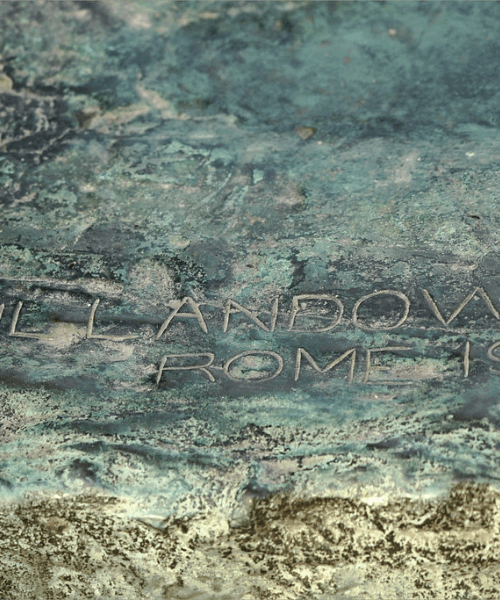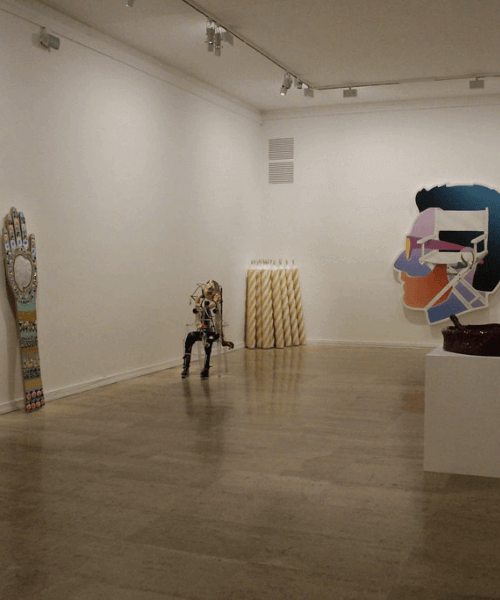The importance of the signature on an artwork
The last gesture of an artist on his painting, on his sculpture or on his work, whatever it is, consists in affixing his signature.
This seemingly innocuous gesture means not only that the canvas or creation is finished but also that the artist is proud of it and is ready to put it on the art market.
Before choosing an artwork, learn about the history of signing a work of art, its function for an artist and what it brings to creation.
Summary
- The price of a work of art set according to the market
- The price criteria according to the work
- Guarantees of the authenticity of a work
The appearance of signatures on artists' works
A little history of the signature on an artwork
It was during the Renaissance that the signature began to appear on paintings.
Previously, this was affixed to the margin of the image or engraved on the frame.
The painting by Jan van Eycke, Portrait of the Arnolfini husbands, is an exception. Painted in 1435, the image bears the Latin inscription Johannes de Eyck fuit hic (Jan van Eycke was here) which serves as a signature.
Subsequently, Italian painters used a cartellino, that is to say a small wallpaper on the painting, on which was inscribed a legend (philosophical thought, for example) followed by the artist's signature.
This seemingly harmless gesture modifies the status of painting and induces the notion of belonging of the work to an author.
By signing, creation truly becomes a work of art.
In the 19th century, this practice became widespread until it became essential. In the 20th century, Marcel Duchamp and his famous Fountain, a porcelain urinal, a work refused in an exhibition in New York, overturned artistic codes.
This work is signed in a very visible way “R. Mutt”, an unknown in the world of art. From this assumed name, Marcel Duchamp places the object in the rank of art by the signature.
Signatures in all their forms
The artist chooses the type of shape of his signature. His name can be written in full, like the famous signature of Pablo Picasso, or have only the initials or even a single letter. Vincent Van Gogh only signed his oil paintings by his first name.
It is up to the artist to choose the brush with which he will sign, as well as the colors used.
For prints, a stamp reproducing the signature can be used.
Some artists did not sign all their silkscreen prints because of the too large number of prints. This is the case, for example, with Andy Warhol. Facetious, the latter also went so far as to sign This is not by me Andy Warhol on the back of some of his series.
Usually placed at the bottom right of the canvas, this position of the signature is not, however, regulated.
The artist can decide to sign on the back of the painting or drawing, so as not to alter the composition of his creation.
On a photograph, the artist generally signs in the margin of the images, by hand, with a number certifying the edition to inform about the number of prints.


The function of the signature on a work for an artist
Final act before the sale of the painting or any other work, affixing his signature allows an artist to signify that he has finished and approved his creation.
It is also a question of certifying the date of the work accomplished.
The effect of the signature on the artist
By this last gesture, the author confirms that his creation is finished.
He feels the job is done. This can be a liberating gesture for the artist, who can then sell or exhibit his creation in a gallery.
The sign of the validation of the work by the creator
An author, by signing his work, means that his work is not only finished, but also validated.
The artist attests to the quality of his work and its authenticity.
This aspect must be particularly taken into account for engravings, lithographs and serigraphs. These signed creations validate the quality of the prints by their author.
The signature to validate the date of the artistic creation
La date de la création peut être ajoutée à côté de la signature.
Par ailleurs, chaque signature évoluant au cours du temps, celle des artistes n'échappe pas à la règle. La signature d'une œuvre d'art ancienne par son auteur aide à situer approximativement la date de la création.
The date of creation can be added next to the signature.
Moreover, each signature evolving over time, that of the artists is no exception to the rule.
The signature of an ancient artwork by its author helps to approximate the date of creation.
The value of the signature on the art market
Regarding the sale of the work of art in a gallery, the signature provides additional proof of the authenticity of the creation.
Proof of authenticity validated by an expert
For an art collector, the signature is an indication of the authenticity of the work.
Certified as true by an expert, it constitutes further proof that the painting is the result of the artist's work, or that he validates it. When buying from a gallery, on site or online, the art dealer also provides a certificate of authenticity of the work.
Added value to the sale of the artwork
An expert in the art market knows how to authenticate the true signature of a known artist. Its certification increases the value of the work. For example, the surrealist painter Salvador Dalí was known to have signed many blank copies of his lithographs. Many fakes then invaded the art market. An expert will be able to give valuable advice on this type of subject and confirm the authenticity of the work if you wish to acquire it in your collections.
Contemporary articles:
On the subject:
How to choose an artwork?
find out more :







